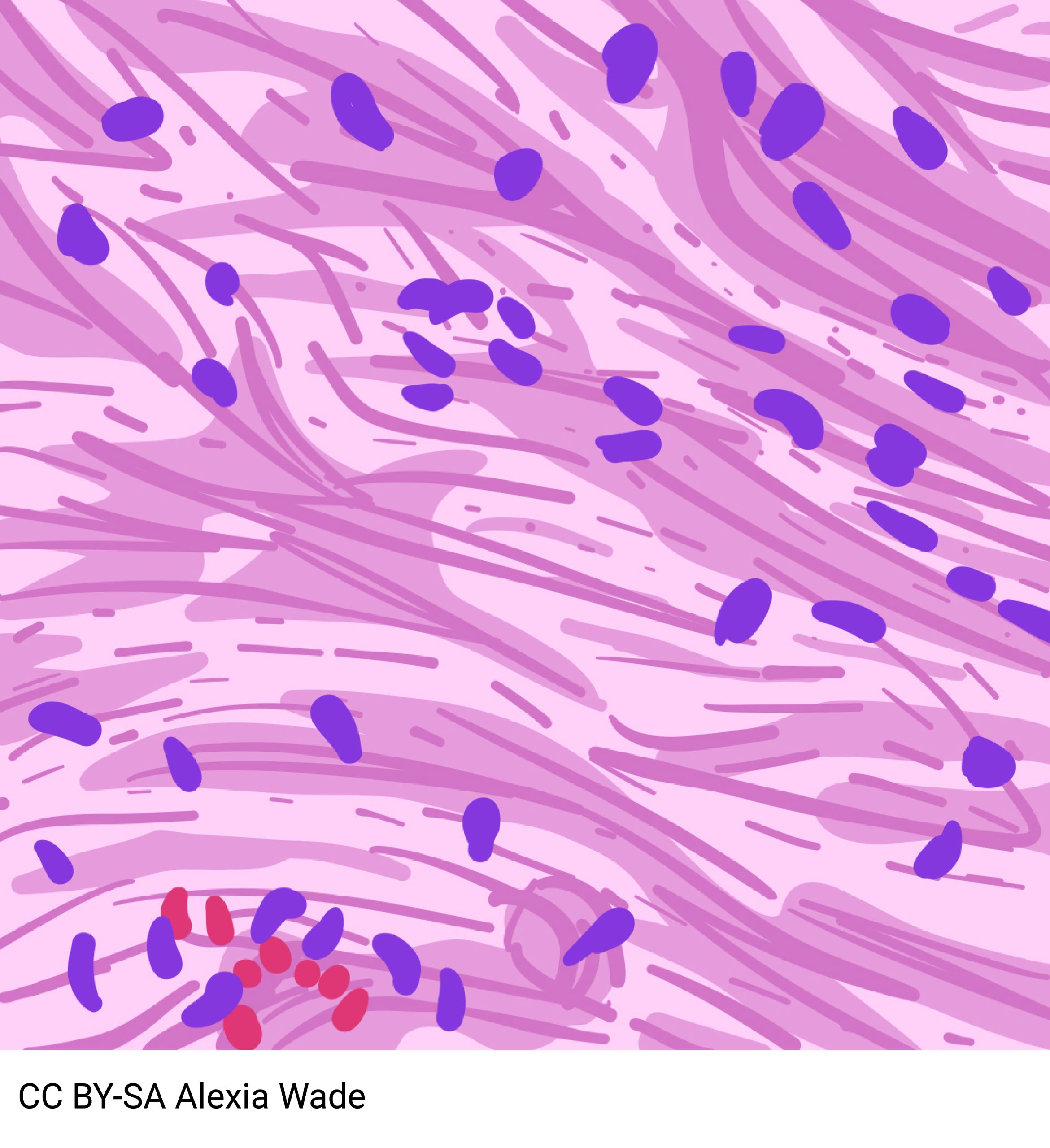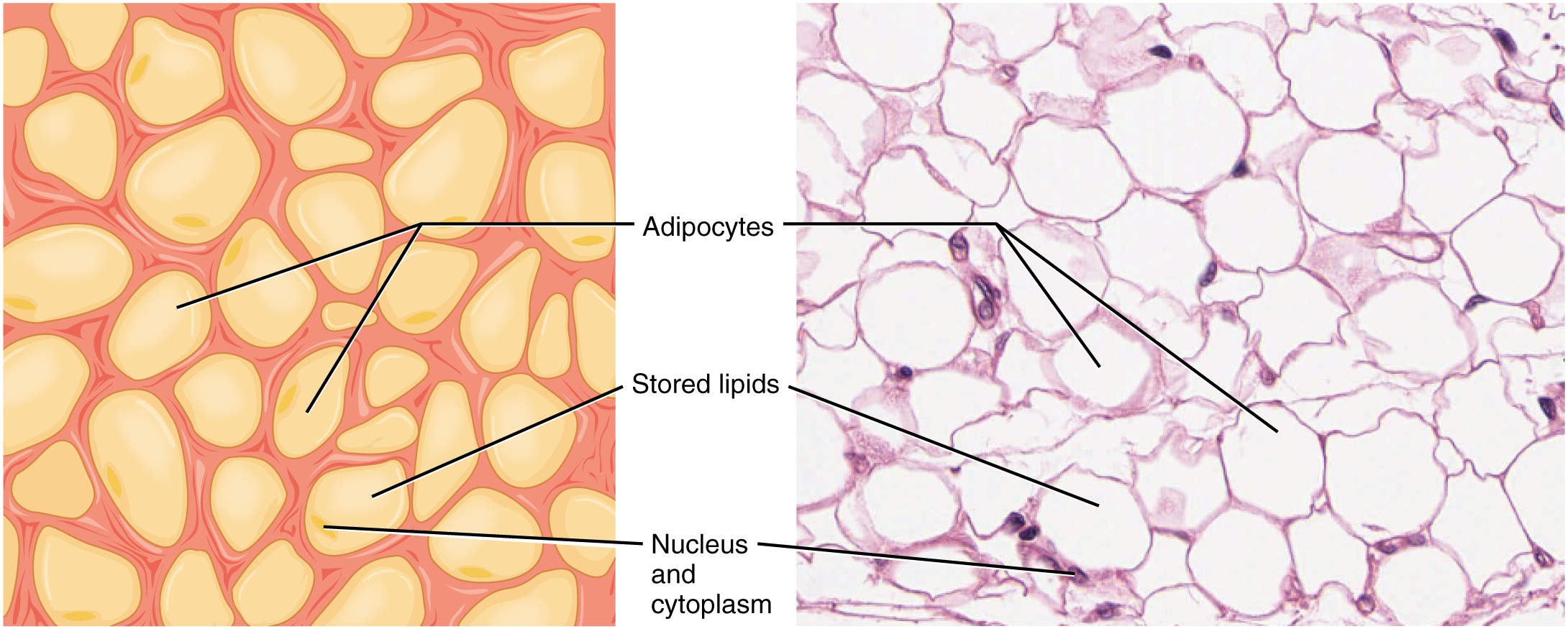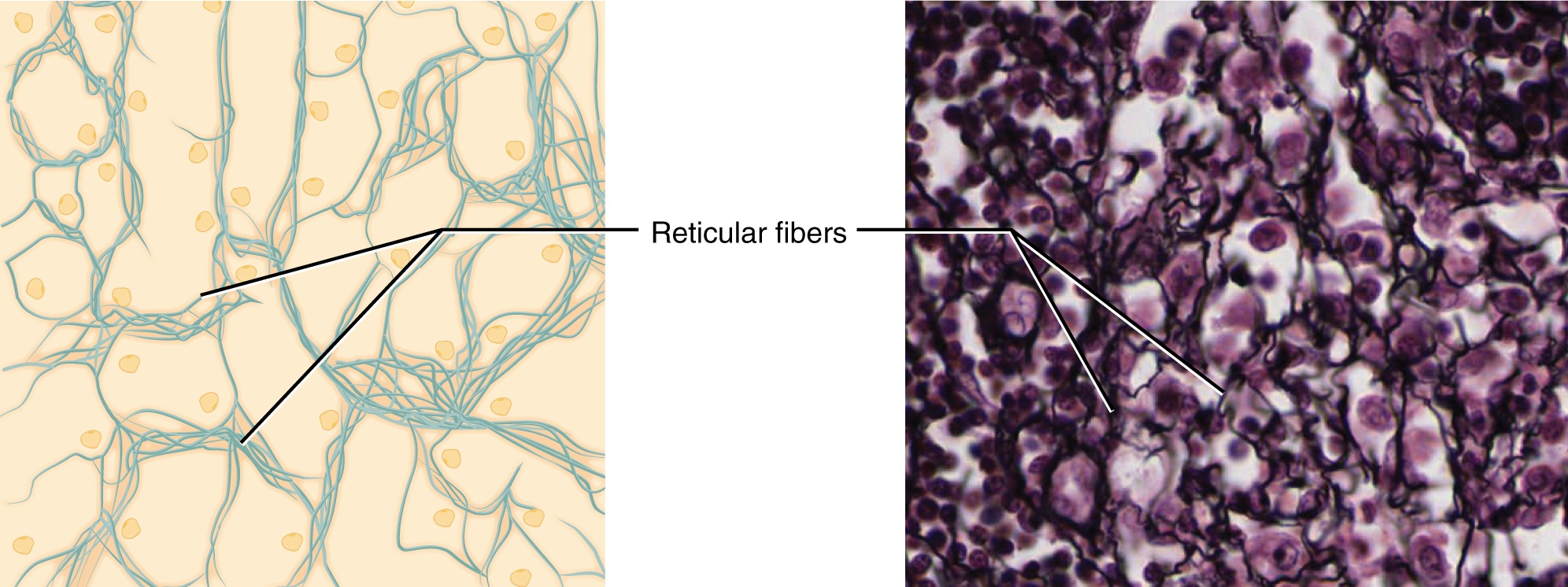Loose Connective Tissue
Objective 7.6
7.6.1 Characterize, and give examples of, loose connective tissue.
Loose connective tissue is made up of fibers spread out loosely throughout the extracellular matrix. Subcategories of loose connective tissues include:
- areolar connective tissue;
- adipose tissue; and
- reticular connective tissue.
Areolar connective tissue is the most common connective tissue type and is found in a wide variety of locations, such as in the layer supporting the skin and mucous membranes, and supporting and surrounding organs. It consists of a mixture of fiber types (collagen, elastin, and reticular fibers) and all of the cell types described above.

Adipose tissue, or fat, is found under the skin, around the heart and kidneys, in yellow bone marrow, and forms a cushion in joints and around the eye socket. The function of adipose tissue is to store fat for energy use and to provide insulation and cushioning. Some types of adipose tissue are thermogenic; they release heat when broken down and are not used to provide energy to cells. Adipose tissue consists of cells called adipocytes that have a huge fat droplet surrounded by a rim of cytoplasm and nucleus.

Reticular tissue is a loose meshwork of reticular fibers with reticular cells. This forms the stroma (supporting framework; Greek: “bed” or “couch”) of the liver, spleen, lymph nodes, and red bone marrow (where blood cells are formed). It also forms the reticular lamina of the basement membrane. Reticular comes from the Latin reticulum, which means “little net.”

Media Attributions
- U07-046 areolar connective tissue © Wade, Alexia is licensed under a CC BY-SA (Attribution ShareAlike) license
- U07-047 Adipose_Tissue © Betts, J. Gordon; Young, Kelly A.; Wise, James A.; Johnson, Eddie; Poe, Brandon; Kruse, Dean H. Korol, Oksana; Johnson, Jody E.; Womble, Mark & DeSaix, Peter is licensed under a CC BY (Attribution) license
- U07-048 Reticular_Tissue © Betts, J. Gordon; Young, Kelly A.; Wise, James A.; Johnson, Eddie; Poe, Brandon; Kruse, Dean H. Korol, Oksana; Johnson, Jody E.; Womble, Mark & DeSaix, Peter is licensed under a CC BY (Attribution) license

